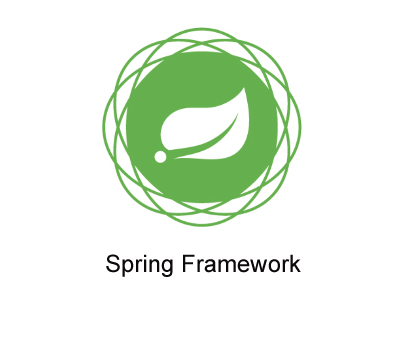
Advertisement
package decodejava;
import java.io.File;
import javax.mail.MessagingException;
import javax.mail.internet.MimeMessage;
import org.springframework.mail.SimpleMailMessage;
import org.springframework.mail.javamail.JavaMailSenderImpl;
import org.springframework.mail.javamail.MimeMessageHelper;
public class MailSender
{
private SimpleMailMessage simpleMailMessage;
private JavaMailSenderImpl javaMailSenderImpl;
//Setting the SimpleMailMessage property
public void setSimpleMailMessage(SimpleMailMessage smm)
{
simpleMailMessage = smm;
}
//Setting the JavaMailSenderImpl property
public void setJavaMailSenderImpl(JavaMailSenderImpl jms)
{
javaMailSenderImpl = jms;
}
//Sending a text mail message
public void sendTextMail()
{
javaMailSenderImpl.send(simpleMailMessage);
}
//Sending a MIME mail message
public void sendMimeMail(String from, String to, String subject, String body, String fileName, String location) throws MessagingException
{
MimeMessage mimeMsg = javaMailSenderImpl.createMimeMessage();
MimeMessageHelper mimeMsgHelper = new MimeMessageHelper(mimeMsg, true);
mimeMsgHelper.setFrom(from);
mimeMsgHelper.setTo(to);
mimeMsgHelper.setSubject(subject);
mimeMsgHelper.setText(body);
mimeMsgHelper.addAttachment(fileName, new File(location));
javaMailSenderImpl.send(mimeMsg);
}
}Advertisement
package decodejava;
import java.util.Set;
import java.util.TreeSet;
import javax.mail.MessagingException;
import org.springframework.context.ApplicationContext;
import org.springframework.context.support.FileSystemXmlApplicationContext;
import org.springframework.expression.spel.standard.SpelExpressionParser;
import org.springframework.expression.spel.support.StandardEvaluationContext;
public class Utility {
public static void main(String[] args) throws MessagingException
{
ApplicationContext context = new FileSystemXmlApplicationContext("classpath:config.beans.xml");
MailSender sender = context.getBean("mailSenderBean",MailSender.class);
//Sending a simple text email message
sender.sendTextMail();
System.out.println("Simple text email sent successfully!");
String from = "sender-email-address@abcd.com";
String to = "recipient-email-address@abcd.com";
String subject = "Hello";
String body = "Have a good day!";
String fileName = "Sending a picture";
String location = "D:\\IMG_2415.jpg";
//Sending a MIME email message
sender.sendMimeMail(from, to, subject, body, fileName, location);
System.out.println("MIME email with attachment sent successfully!");
}
}<?xml version="1.0" encoding="utf-8"?>
<beans xmlns="http://www.springframework.org/schema/beans"
xmlns:xsi="http://www.w3.org/2001/XMLSchema-instance"
xmlns:util="springframework.org/schema/util"
xmlns:context="http://www.springframework.org/schema/context"
xsi:schemaLocation="http://www.springframework.org/schema/beans
http://www.springframework.org/schema/beans/spring-beans.xsd
http://www.springframework.org/schema/context
https://www.springframework.org/context/spring-context.xsd
">
<bean id="mailSenderBean" class="decodejava.MailSender">
<property name="simpleMailMessage" ref = "simpleMailMessageBean"/>
<property name="javaMailSenderImpl" ref = "javaMailSenderImplBean"/>
</bean>
<bean id="simpleMailMessageBean" class="org.springframework.mail.SimpleMailMessage">
<property name="from" value="sender-@email-address.com"></property>
<property name="to" value="recipient@email-address.com"></property>
<property name="subject" value="Hello"></property>
<property name="text" value="Have a good day!"></property>
</bean>
<bean id="javaMailSenderImplBean" class="org.springframework.mail.javamail.JavaMailSenderImpl">
<property name="host" value="smtp.zoho.com"></property>
<property name="username" value="sender-email-address@abcd.com"></property>
<property name="password" value="enter-your-password-here"></property>
<property name="port" value="587"/>
<property name="protocol" value="smtp"/>
<property name="javaMailProperties">
<props>
<prop key="mail.smtp.auth">true</prop>
<prop key="mail.smtp.starttls.enable">true</prop>
</props>
</property>
</bean>
</beans>
Aug 27, 2018 6:48:54 PM org.springframework.context.support.AbstractApplicationContext prepareRefresh
INFO: Refreshing org.springframework.context.support.FileSystemXmlApplicationContext@1c4af82c: startup date [Mon Aug 27 18:48:54 2018]; root of context hierarchy
Aug 27, 2018 6:48:54 PM org.springframework.beans.factory.xml.XmlBeanDefinitionReader loadBeanDefinitions
INFO: Loading XML bean definitions from class path resource [config.beans.xml]
Simple text email sent successfully!
MIME email with attachment sent successfully!
Advertisement
Advertisement
Please check our latest addition
C#, PYTHON and DJANGO
Advertisement



